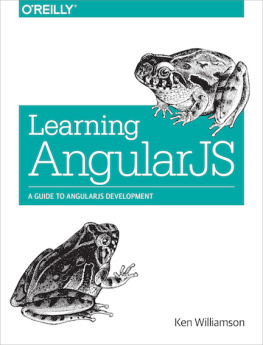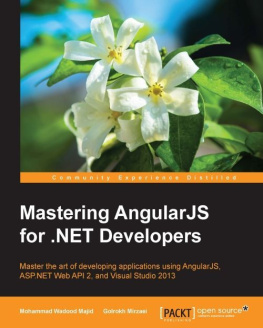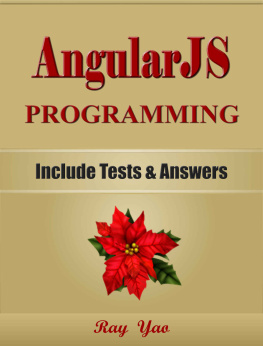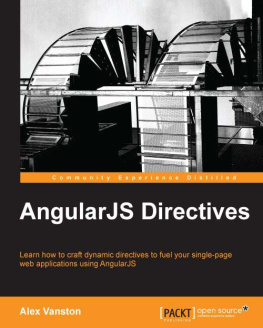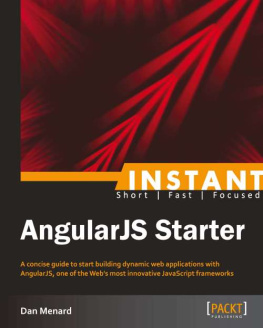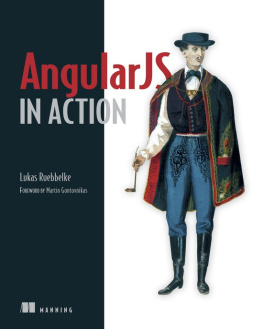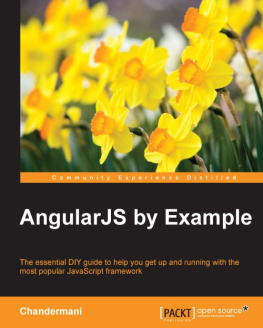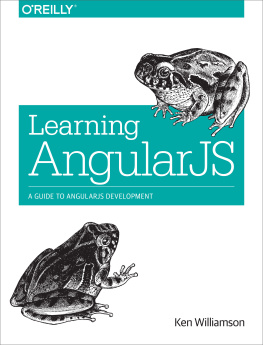Rick L. - AngularJS Handbook: Easy Web App Development
Here you can read online Rick L. - AngularJS Handbook: Easy Web App Development full text of the book (entire story) in english for free. Download pdf and epub, get meaning, cover and reviews about this ebook. year: 2016, genre: Computer. Description of the work, (preface) as well as reviews are available. Best literature library LitArk.com created for fans of good reading and offers a wide selection of genres:
Romance novel
Science fiction
Adventure
Detective
Science
History
Home and family
Prose
Art
Politics
Computer
Non-fiction
Religion
Business
Children
Humor
Choose a favorite category and find really read worthwhile books. Enjoy immersion in the world of imagination, feel the emotions of the characters or learn something new for yourself, make an fascinating discovery.

AngularJS Handbook: Easy Web App Development: summary, description and annotation
We offer to read an annotation, description, summary or preface (depends on what the author of the book "AngularJS Handbook: Easy Web App Development" wrote himself). If you haven't found the necessary information about the book — write in the comments, we will try to find it.
Easy Web App Development
This book is an exploration of AngularJS. It begins by giving the user a brief overview of what the AngularJS is and where it is used. An explanation is given on how the AngularJS and HTML are related and on how they can be used together. You will learn how to work with both static and dynamic contents by use of Angular and HTML. The XHRs property in AngularJS is also discussed in depth. It is in this chapter that you will learn how to work with large data sets in AngularJS. This is a very important factor when developing web applications. You will also be guided on how to work or how to implement animations in your AngularJS web application. Through reading this book, you will learn how to work with the AngularJS functions $watch(), $digest(), and $apply(). The hierarchy of the $scope object is also examined in detail. You will then learn how to use the root and the children of this object. The process of refactoring the AngularJS applications has been explored in detail, so that you will understand how it is done.
The following topics have are explored in this book:
Overview of AngularJS
AngularJS and HTML
XHRs
Links & Images
Working with Animations
$watch() , $digest(), and $apply()
The Hierarchy of $scope
Refactoring AngularJS Apps
Here is a preview of what youll learn:
- Overview of AngularJS
- AngularJS and HTML
- XHRs
- Links & Images
- Working with Animations
- $watch() , $digest(), and $apply()
- The Hierarchy of $scope
- Refactoring AngularJS Apps
Download your copy of AngularJS Handbook by scrolling up and clicking Buy Now With 1-Click button.
Rick L.: author's other books
Who wrote AngularJS Handbook: Easy Web App Development? Find out the surname, the name of the author of the book and a list of all author's works by series.

